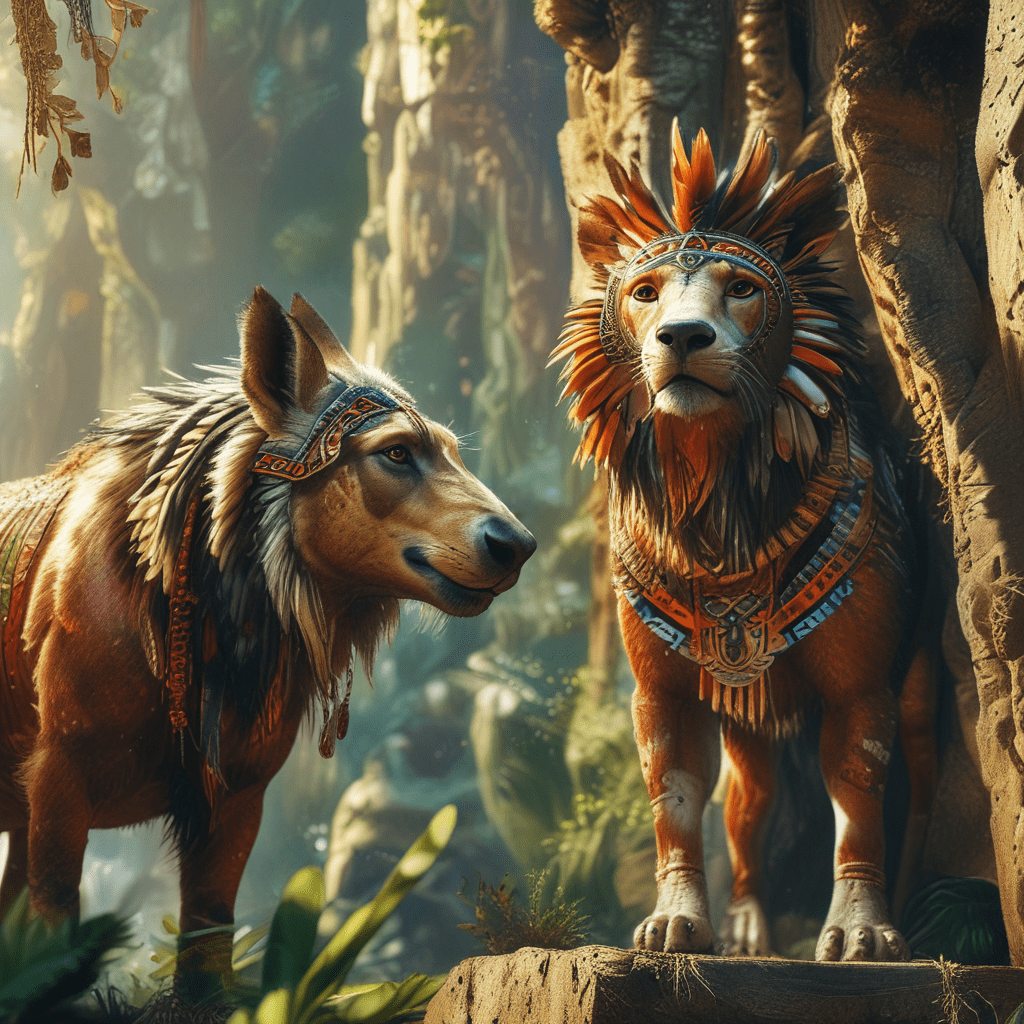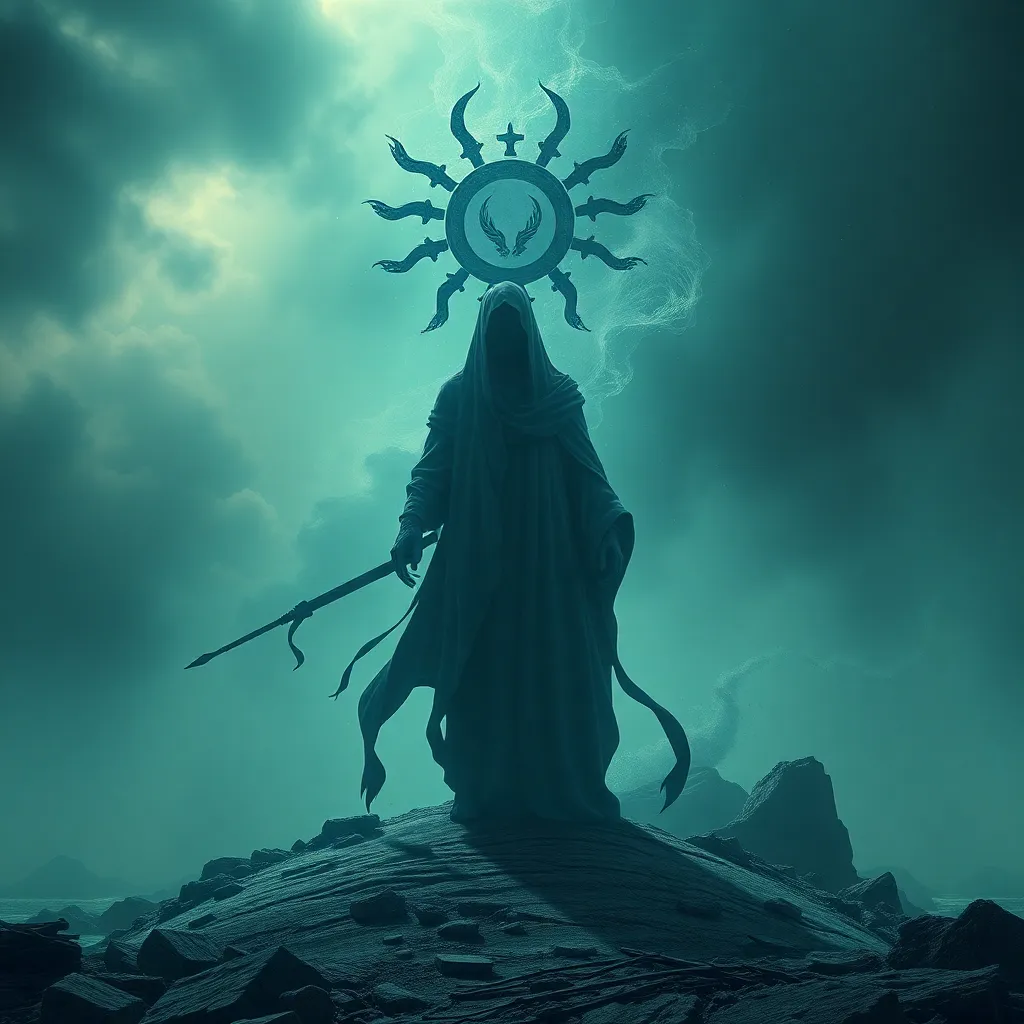Incan Mythological Animals: A Tapestry of Symbolism
The Incan civilization, renowned for its advanced architecture, intricate textiles, and complex social structures, also possessed a rich tapestry of mythology. Woven into the fabric of their beliefs was a deep reverence for nature, with animals playing a vital role in their cosmology. Incan mythology saw animals not simply as creatures of the Earth, but as powerful symbols that interconnected the physical and spiritual realms. They were embodiments of natural forces, embodying virtues and vices, and serving as messengers between the human world and the divine. These animals provided guidance, protection, and inspiration to the Incan people.
The Role of Animals in Incan Cosmology
Incan cosmology, a complex and multifaceted system of beliefs, placed great emphasis on the interconnectedness of all things. They believed that humans were part of a larger cosmic order, where every element, including animals, had its place and purpose. Animals were seen as embodiments of different spiritual energies and served as conduits between the physical realm and the supernatural. The Incan people believed that animals were capable of mediating between humans and the gods, delivering messages, providing guidance, and even embodying divine power.
The Incan worldview, deeply influenced by their natural surroundings, attributed symbolic meaning to animals based on their behavior, physical characteristics, and significance within the ecosystem. For example, birds like the condor, which soared high above the Andes, were seen as messengers of the gods, connecting the Earth to the heavens. Similarly, the powerful puma, a predator that reigned supreme in the mountains, was associated with strength, royal authority, and the underworld.
The Sacred Puma: Guardian of the Underworld and Royal Symbol
The puma, a majestic feline native to the Andes, held a profound significance in Incan mythology. It was considered a sacred animal, associated with both power and mystery. As a predator that thrived in the high altitudes, the puma was seen as a symbol of strength, agility, and resilience. Its nocturnal nature linked it to the underworld, a realm ruled by the god Pachamama.
The Incan emperors, known as Sapa Inca, were often compared to the puma, embodying its strength and authority. The puma was thought to represent the emperor's connection to the divine, their power over the land, and their ability to protect their people. The puma's presence in Incan art, textiles, and ceremonial objects reinforced its importance as a royal symbol.
The Condor: Soaring Messenger of the Gods
The Andean condor, with its majestic wingspan and ability to soar high above the mountains, was deeply revered by the Incan people. It was considered a sacred messenger of the gods, able to traverse the realms of the heavens and the Earth. The condor's ability to fly to great heights symbolized its connection to the divine, making it a conduit between the human world and the celestial realm.
The Incas believed that the condor could carry messages from the gods to humans, bringing wisdom, guidance, and even warnings. The condor's sharp eyesight was also associated with foresight and knowledge. Its presence in Incan ceremonies, artwork, and even burial sites indicated its profound importance in their religious beliefs.
The Snake: A Powerful Force of Transformation and Healing
Snakes, often viewed with fear and suspicion in other cultures, were seen in a different light by the Incan people. They were associated with powerful forces of nature, embodying both danger and healing. Snakes, being able to shed their skin, were symbols of transformation, rebirth, and renewal. They represented the ongoing cycle of life, death, and resurrection.
The Incas believed that snakes possessed medicinal properties and were capable of healing. They were often depicted in Incan art entwined with medicinal plants, symbolizing their connection to herbal remedies. The snake's association with the Earth and its hidden depths made it a powerful entity in Incan mythology, representing the forces of nature and the potential for transformation.
The Llama: Provider and Symbol of Resilience
The llama, a domesticated animal native to the Andes, was a vital part of Incan life. This gentle creature was not just a source of food, wool, and transportation, but also held significant symbolic meaning. The llama's resilience in the harsh Andean environment, its ability to carry heavy loads, and its calm demeanor made it a symbol of strength, endurance, and adaptability.
Incan mythology considered the llama a symbol of fertility and abundance. Its association with the Earth and its ability to provide sustenance for the people made it a sacred animal. The llama's presence in Incan art and textiles, even in the form of figurines, highlights its importance in their lives. The llama symbolized the Incan people's ability to thrive in challenging conditions, adapting to the harsh realities of the Andes.
The Intihuatana: The Sun Stone and its Animal Connections
The Intihuatana, a stone structure found at various Incan sites, is a fascinating example of how animal symbolism intertwined with astronomical knowledge. The word "Intihuatana" translates to "sun-tying post," referring to its astronomical function. These structures were designed to mark the solstices and equinoxes, demonstrating the Incan's understanding of celestial cycles.
While the Intihuatana itself wasn't an animal, it was deeply associated with them in Incan mythology. The Intihuatana represented the sun god Inti, who was often depicted as a condor or a puma. The condor, as mentioned earlier, represented the sun's journey across the heavens, connecting the Earth to the divine. The puma, with its connection to the underworld, symbolized the sun's descent into darkness and its eventual rebirth. The Intihuatana therefore served as a bridge between the sun god, the animals associated with him, and the Earth.
The Interplay of Animal Symbolism with Nature
Incan animal mythology was deeply rooted in their close relationship with the natural world. The Incan people recognized the importance of animals within their ecosystem and attributed their behavior and characteristics to specific forces of nature. The condor's soaring flight reflected the power of the wind, while the puma's predatory nature mirrored the resilience of the Andes' terrain.
The Incan's understanding of animal behavior and their place within the environment shaped their mythology. The snake, for example, was associated with healing because of its ability to shed its skin, a process that the Incan people linked to the cycle of regeneration in nature. Animals were not just symbols, but reflections of the natural world and its intricate workings.
Animal Metaphors in Incan Art and Literature
Incan animal mythology found expression in various forms of art and literature. The puma, condor, snake, and llama were all prominently featured in Incan textiles, ceramics, and metalwork. These animals were used as decorative motifs, but they also conveyed deeper meanings. A woven tapestry featuring a condor might symbolize the connection between the Earth and the heavens, while a ceramic pot depicting a puma could represent the strength and resilience of the people.
Incan oral literature, passed down through generations, also incorporated animal metaphors. Stories, myths, and songs often featured animals as characters or as symbolic representations of human values and experiences. These tales reflected the Incan people's worldview, teaching lessons about courage, wisdom, and the delicate balance of life.
The Impact of Incan Animal Mythology on Modern Culture
The Incan mythology of animals continues to resonate today, influencing modern culture in various ways. The enduring popularity of the image of the condor, especially in Andean art and literature, is a testament to its enduring symbolic power. The puma, with its association with strength and royalty, remains a prominent figure in South American culture. These animals have become symbols of national identity and cultural pride.
The Incan mythology of animals has also inspired works of art, literature, and film. The story of the condor's journey to the heavens, the puma's guardianship of the underworld, and the llama's connection to fertility have been interpreted and reimagined by artists and writers, enriching the world of storytelling.
Theorizing the Origins and Significance of Incan Animal Symbolism
The origins of Incan animal mythology are deeply intertwined with their ancestral beliefs and their close relationship with the natural world. The Incan people's reverence for nature and their deep understanding of the animal kingdom likely influenced their attributing symbolic meaning to animals.
The significance of Incan animal symbolism lies in its ability to connect the Incan people to their environment, their ancestors, and the divine. Animals served as intermediaries between the human and the spiritual realms, embodying the power and mystery of the natural world. The Incan mythology of animals highlights the importance of understanding the interconnectedness of all living things and the sacredness of the Earth.
FAQ
What are some of the most important Incan mythical animals?
The most important Incan mythical animals include the puma, condor, snake, and llama. Each of these animals holds significant symbolic meaning within Incan culture and mythology.
What is the significance of the puma in Incan mythology?
The puma was considered a sacred animal, symbolizing strength, agility, resilience, and the underworld. It was associated with the Incan emperors and represented their power and connection to the divine.
What is the role of the condor in Incan mythology?
The condor, with its ability to soar high above the Andes, was seen as a messenger of the gods, connecting the Earth to the heavens. Its sharp eyesight and ability to fly to great heights symbolized foresight and knowledge.
What is the significance of the snake in Incan mythology?
Snakes, associated with transformation, rebirth, and renewal, were believed to possess medicinal properties and were capable of healing.
What is the significance of the llama in Incan mythology?
The llama was a symbol of resilience, endurance, fertility, and abundance. Its association with the Earth and its ability to provide sustenance for the people made it a sacred animal.
How does Incan animal mythology impact modern culture?
Incan animal mythology continues to influence modern culture through art, literature, and symbolism. The condor, puma, and llama have become enduring symbols of national identity and cultural pride in South American cultures.



